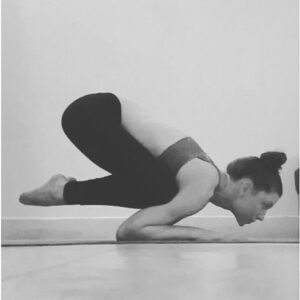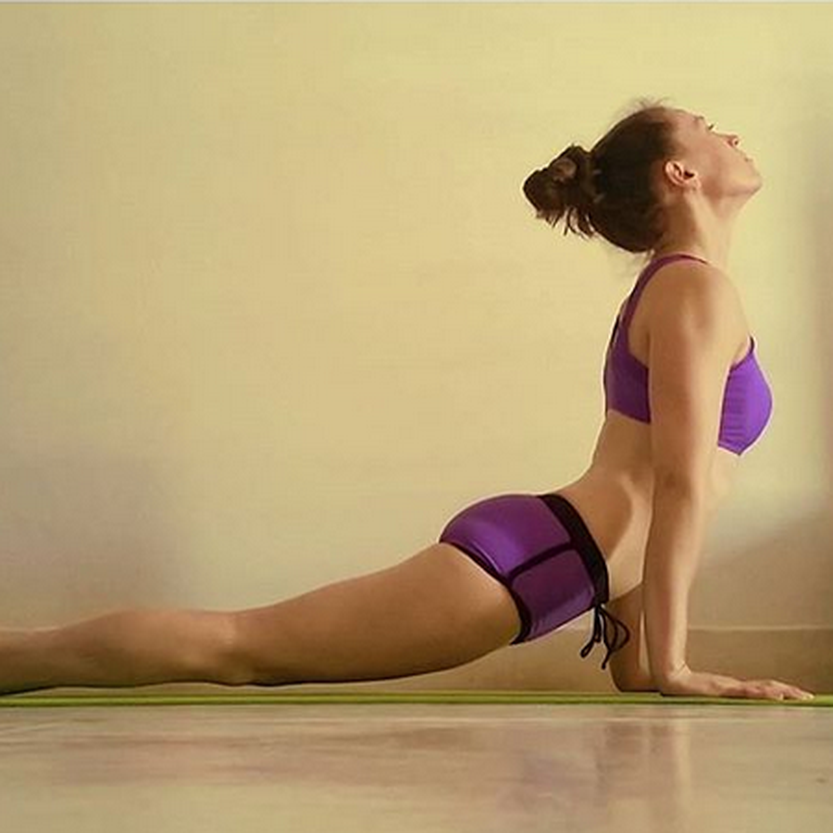I recently came across a new article by Monika from The Dance Training Project titled “7 Rules for a Highly Effective Movement Practice”.
I’ve followed Monika for a long time, enjoying her thoughts about safe dance training and body awareness. She currently works in Toronto, helping dancers to improve their technique by retraining movement patterns for better alignment and injury prevention. It’s a valuable practice and her insight is relevant to all kinds of dancers and athletes.
In her most recent article Monika makes a point about breathing. My yoga practice has encouraged me to think about the relationship between breath and movement. Vinyasa is defined as “a method of yoga in which movements form a flowing sequence in coordination with the breath.” Breathing properly not only brings oxygen into the blood and to the muscles, it also ensures you are moving from a place of calm and not from a fight-or-flight mode that can lead to tension and injury.
When trying new poses in yoga the excitement of floating on your hands, or being upside-down, gritting your teeth while you sustain a posture, and the if-I-can-just-ahhh-get-my-foot-to-reach-aahhh-just-there mentality, often results in yogis forgetting about their breath. Holding your breath in, or out, causes the mind and body to become tense and a tense body loses it’s ability to be flexible and strong.
Monika points out,
“If you cannot breathe during the movement, you do not own the movement.”
and she goes to explain,
“Your emotional state and physical health can be interpreted via the quality of your breath, as well as your ability to load and use core musculature to provide dynamic stability and decelerate spinal motion.
In motion, if you can demonstrate a diaphragmatic breathing pattern, you are in charge. Good work.”
Consider a pose that you feel most comfortable with. Beginner or advanced, it does not matter. Many people find a shoulder stand fairly comfortable. It’s a go to for beginning to enter the relaxed state for the end of the practice, and is a good entry point for beginners to feel what it is like to hold a position upside-down.

I’d bet you can breathe fully and completely while holding a shoulder stand. You’re so comfortable that you can even make your legs into other shapes. It may even be such a resting pose you can hold it for 20 breaths or more.

Now think about a pose that requires more effort for you. It may be a crow pose, headstand, firefly, or even log pose. What is your breath doing when you attempt these poses? Can you breathe, as Monika says, with a “diaphragmatic breathing pattern”? Or are you taking shallow breaths barely filling the upper part of your lungs? Are you holding your breath?
If you video your practice, you may even be able to see your face change as you grit your teeth and the tendons in your neck pop, all signs that you are not breathing properly and not “owning the movement”.
If you are still unconvinced that all of this matters, consider how the quality of your breath will also effect the quality of the movement. A practitioner who has been holding their breath as they hold a pose, is going to have to breathe eventually, usually with a gasp that will interrupt their flow and progression into the next pose.
So how do you find space in your dance to breathe?
I recall an instructor once asking us spontaneous questions while training. He suggested a pose, an headstand for example, and then asked us to stay in the pose and call out five names. This experience forced our brains to change tack, most often allowing our breath to return to state of normal while we focused on a different task. The act of talking also changes the way you hold your face and neck, allowing a more natural breathing pattern to resume.
Try it for yourself and feel how your own breath changes the movement. Prepare for an inversion and inhale as you go upside-down. Now try it again with an exhale. Some people suggest inverting with your mouth slightly open, reducing the chance that you will grit your teeth. Record yourself or do it with a friend and see if they can see the difference. Most likely, you will also find that the movement feels different to you too.
Once you have experimented with this, consider how you breathe when moving through other poses, or throughout an entire practice. I’ve been known to write in breaths into my teaching notes as conscious reminders of when to check in and make sure I, and my students, are breathing properly.
If you are interested in learning about breath work, pranayama, or how to assess the quality of your breathing during your yoga practice, contact me for a Live Coaching Session!